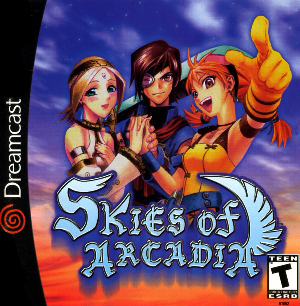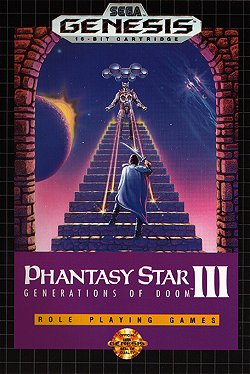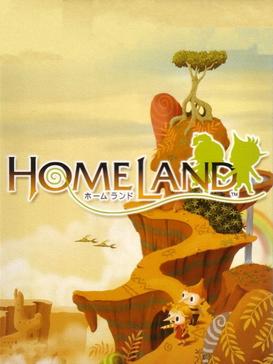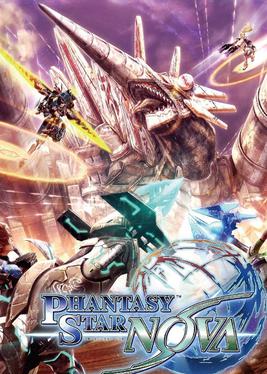
Phantasy Star is a role-playing video game (RPG) developed by Sega and released for the Master System in 1987. One of the earliest Japanese RPGs for consoles, Phantasy Star tells the story of Alis on her journey to defeat the evil ruler of her star system, King Lassic, after her brother dies at his hands. She traverses between planets, gathering a party of fighters and collecting the items she needs to avenge her brother's death and return peace to the star system. The gameplay features traditional Japanese RPG elements including random encounters and experience points. All the characters have predefined personalities and abilities, a unique element compared to the customizable characters of other RPGs of the era.

Phantasy Star Online is an online role-playing game (RPG) developed by Sonic Team and published by Sega in 2000 for the Dreamcast. It was the first online RPG for game consoles; players adventure with up to three others over the internet to complete quests, collect items and fight enemies in real-time action RPG combat. The story is unrelated to previous games in the Phantasy Star series.
Star Wars: Customizable Card Game (SW:CCG) is an out-of-print customizable card game based on the Star Wars fictional universe. It was created by Decipher, Inc., which also produced the Star Trek Customizable Card Game and The Lord of the Rings Trading Card Game. The game was produced from December 1995 until December 2001. Since 2002, the game has been maintained by the Star Wars CCG Players Committee, with new virtual cards being released every few months and the capability to play both in person and online.

The Star Trek Customizable Card Game is an out-of-print collectible card game based on the Star Trek universe. The name is commonly abbreviated as STCCG or ST:CCG. It was first introduced in 1994 by Decipher, Inc., under the name Star Trek: The Next Generation Customizable Card Game. The game now has two distinct editions, though both forms of the game have many common elements.

Skies of Arcadia is a 2000 Dreamcast role-playing video game developed by Overworks and published by Sega. Players control Vyse, a young air pirate, and his friends as they attempt to stop the Valuan Empire from reviving ancient weapons with the potential to destroy the world.

Phantasy Star II is a science fantasy role-playing video game developed and published by Sega for the Sega Genesis. It was released in Japan in 1989, North America in 1990, and in Europe in 1990. It was later ported to a variety of different platforms. An updated remake, Phantasy Star Generation 2, was released for the PlayStation 2 in 2005 in Japan.
The Shining series is a brand of role-playing video games published by Sega, who owns the property. The first game, Shining in the Darkness, was a first-person dungeon crawler with randomly encountered, turn-based battles. The next game released in the series was Shining Force, which was a turn-based strategy style tactical role-playing game with battle scenes acted out with sprites. Other directions include Shining Soul, a dungeon crawl action role-playing game with roguelike elements, and a number of traditional Japanese role-playing games. Shining Resonance Refrain was released on PlayStation 4, Xbox One, Steam PC and Nintendo Switch worldwide across 2018.

Phantasy Star IV: The End of the Millennium is a role-playing video game developed and published by Sega for the Sega Genesis. It was released in Japan in 1993 and Europe and North America in 1995. It is the fourth and final game in the original Phantasy Star series, concluding the story of the Algol Star System. Phantasy Star IV kept many of the gameplay elements of the previous game, including turn-based battles, overhead exploration, and magic spells. It received mixed reviews upon its release, but has since been subject to much more positive retrospectives, and it is considered one of the greatest video games of all time. The game was also released for the Wii Virtual Console in 2008, and the Nintendo Switch Online + Expansion Pack in 2021, and has also been included in various Sega emulated collections.

Phantasy Star III: Generations of Doom is a role-playing video game developed and published by Sega. It was released for the Sega Genesis in Japan in April 1990 and worldwide the following year. It is the third game in the original Phantasy Star series, and is a distant sequel to the previous games. However, gameplay is similar to the previous games, with turn-based combat and random encounters. Players explore various overworld maps and dungeons in order to progress through the game. It was later re-released on the Virtual Console and on retro collections such as the Phantasy Star Collection, Sega Genesis Collection, and Sonic's Ultimate Genesis Collection.
Phantasy Star is a series of console role-playing video games and other supplementary media created by Sega. The series debuted in 1987 on the Master System with Phantasy Star, and continues into the present with Phantasy Star Online 2 and other extensions of the Phantasy Star Online sub-series. Each of the games in the series features a science fantasy setting featuring a cross-genre combination of magic and technology.

Phantasy Star Collection is a compilation of the Phantasy Star video games. When released for the Sega Saturn in Japan in 1998, it featured the first four games in the series, whereas the Game Boy Advance version, released four years later in North America and five in Europe, features the first three. The North American and European versions were produced by Digital Eclipse. The Saturn version was later ported to the PlayStation 2 in Japan with more games added.

The GameCube is one of Nintendo's home video game consoles and part of the sixth generation of video game consoles. Although the competing PlayStation 2 and Xbox consoles supported substantial amounts of online games, the GameCube had only eight games with internet or local area network (LAN) support. Nintendo never commissioned any servers or internet services to interface with the console, but allowed other publishers to do so and made them responsible for managing the online experiences for their games. Nintendo remained pensive with its online strategy for the duration of the GameCube's lifespan, defiant of growing interest from players and the success of Microsoft's Xbox Live online service. Company leaders including Shigeru Miyamoto and Satoru Iwata based their stance on concerns with maintaining quality control over their games and doubts that players would want to pay subscription fees.

Homeland is a role-playing video game for the GameCube developed and published by Chunsoft, and was released in Japan on April 29, 2005.

Rieko Kodama, also known as Phoenix Rie, was a Japanese video game artist, director, and producer employed by Sega from 1984 until her death. She is primarily known for her work on role-playing video games including the original Phantasy Star series, the 7th Dragon series, and Skies of Arcadia (2000). She is often recognized as one of the first successful women in the video game industry.

Phantasy Star Portable is an action role-playing game co-developed by Sonic Team and Alfa System, and published by Sega for the PlayStation Portable. Sega released the game to Japan in July 2008, and to other markets in 2009.

Young Jedi Collectible Card Game is an out-of-print collectible card game published by Decipher, Inc. that was released in May 1999. It was based on the events and characters of the movie The Phantom Menace in the Star Wars universe. Seven expansions were released before the game was discontinued in September 2001.

Phantasy Star 0, also known in Australia and Europe as Phantasy Star: ZERO and sometimes in North America as Phantasy Star Ø, is a Nintendo DS game in the Phantasy Star series, developed by Sonic Team and published by Sega. The game was released in Japan on December 25, 2008; in North America on November 10, 2009; and in Europe on February 12, 2010. The game expands on the gameplay mechanics of Phantasy Star Online, partly by borrowing some elements from fellow online Phantasy Star title Phantasy Star Universe, such as a fully realized story mode for offline play.

Phantasy Star Online 2 is a free-to-play online action role-playing game in the Phantasy Star series, developed and published by Sega. It was created as a successor to Phantasy Star Online and Phantasy Star Universe, Phantasy Star Online 2 features gameplay elements and aesthetics reminiscent of previous Phantasy Star games while incorporating a few unique twists on the formula. The first version was released for Windows in Japan in July 2012.

Phantasy Star Nova is a video game for the PlayStation Vita developed by tri-Ace as an installment of the Phantasy Star game series. It was released on November 27, 2014 in Japan, while a Chinese-language version was released throughout Asia on March 26, 2015.

A digital collectible card game (DCCG) or online collectible card game (OCCG) is a computer or video game that emulates collectible card games (CCG) and is typically played online or occasionally as a standalone video game. Many DCCGs are types of digital tabletop games and follow traditional card game-style rules, while some DCCGs use alternatives for cards and gameboards, such as icons, dice and avatars. Originally, DCCGs started out as replications of a CCG's physical counterpart, but many DCCGs have foregone a physical version and exclusively release as a video game, such as with Hearthstone.


















